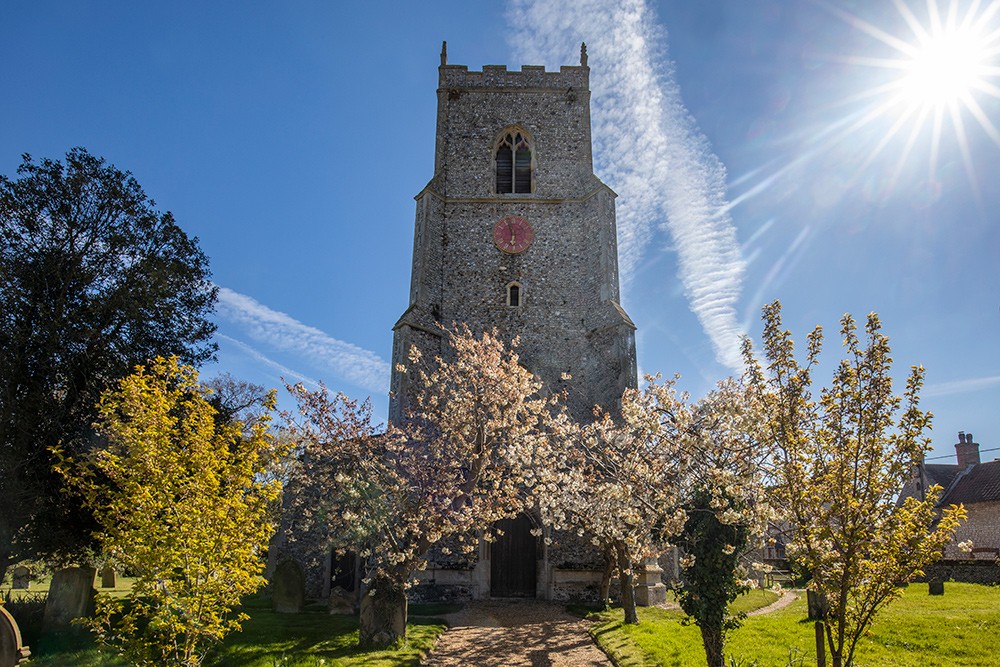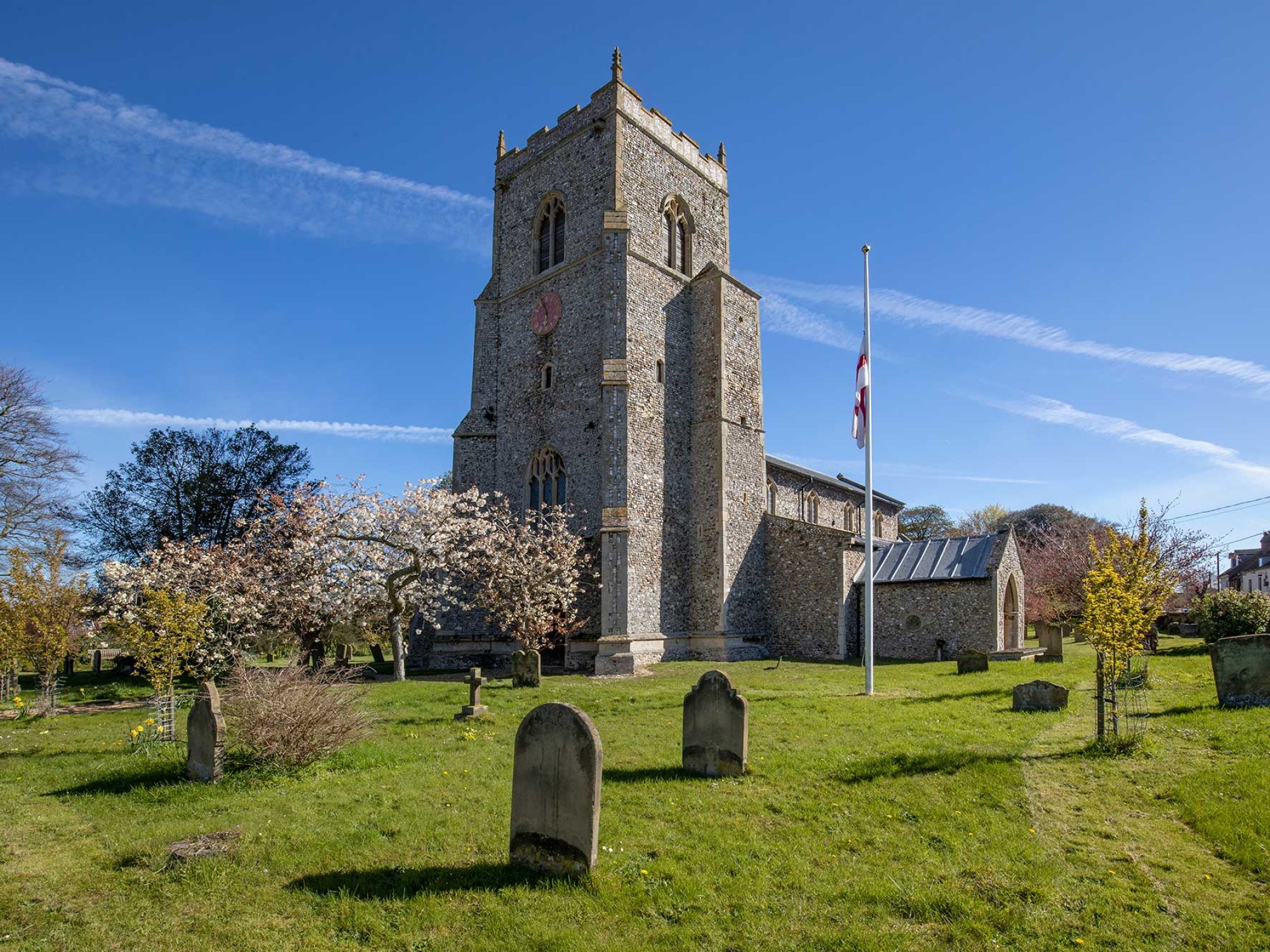
A fine village church with a sea of rare treasures
With its wealth of history and wildlife and strong community feel, St Mary’s is the beating heart of Brancaster. Welcoming, wonderful and full of colour, it’s a charming church with a very vibrant future
Brancaster sits on the North Norfolk coast in an Area of Outstanding Natural Beauty. With its glorious sandy beach and rich Roman history, the small village is full of rare wonders – although few are as delightful as its lovely church.
St Mary’s stands proudly on a pretty coastal path with its distinctive square tower framed against the stretching sky. A humble and elegant construction, it dates mostly to the 14th century – though there’s evidence a Christian church has existed on the site since around 1250. At first glance, there doesn’t seem to be anything particularly special about the building, but on closer inspection there’s a treasure trove of history to be discovered. Though it’s mainly constructed of attractive flint pebbles, some remarkable pieces of Roman stone can be seen in the outer walls of the chancel. These astounding ancient slabs almost certainly originated from the 3rd century Roman fort of Branodunum, which was situated to the east of the village (and whose commander enjoyed the title of Count of the Forts of the Saxon Shore).
There are more amazing wonders to be found inside the church, including a magnificent medieval font cover given by Walter Bodham in 1493. The elaborately-carved wooden masterpiece is a symphony of finials and crockets which telescopes up over itself in a spectacular spiral pattern. Now supported by a modern iron frame, it’s one of Brancaster’s most precious medieval survivals.
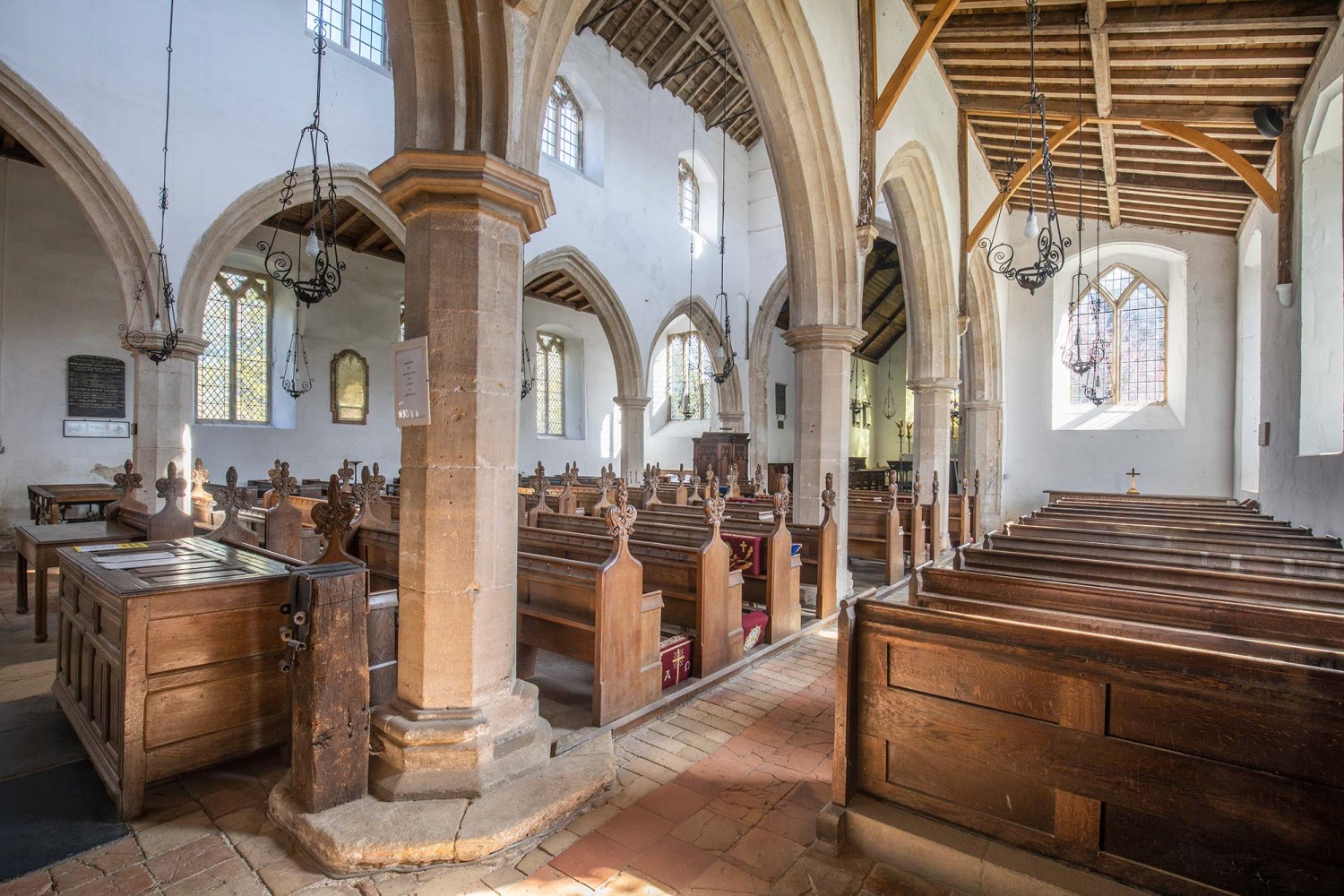
“It’s incredibly beautiful but it’s equally extremely delicate,” says Janet Lake, churchwarden at St Mary’s. “We don’t touch it. We don’t even dust it. It’s a truly astounding piece of art.”
Another impressive element of the church is the grand east window of the chancel. In vibrant stained glass, it depicts a stunning image of Christ throned in glory surrounded by adoring angels and mortals. The striking artwork was installed in 1908 to commemorate the tragic death of the rector’s young wife Muriel Daubeny, who’s included among the mortals in the bottom right corner.
St Mary’s fine clock (which faces both east and west in the tower) was given by parishioners 1907, also in memory of Mrs Daubeny.
“It’s a beautiful old clock and one of the church’s most distinctive features,” says Janet. “It’s in the process of being mechanised so you’ll no longer have to climb the tower to wind it up. It’s also going to be repainted and regilded. We’re all very fond of it and can’t wait to get it chiming again.”
A few of the church’s other memorials include a brass tablet in the nave commemorating local men who gave their lives in the wars, a wooden RNLI service board listing the rescues made by the old Brancaster lifeboat, and some gorgeous Edwardian poppyhead pews which were given by members of the Royal West Norfolk Golf Club.
St Mary’s certainly holds a sea of fascinating treasures, although there’s more than just history concealed in its ancient walls. In the roof space above the west door, staff have discovered a swarm of bees – which have likely been living there for many years.
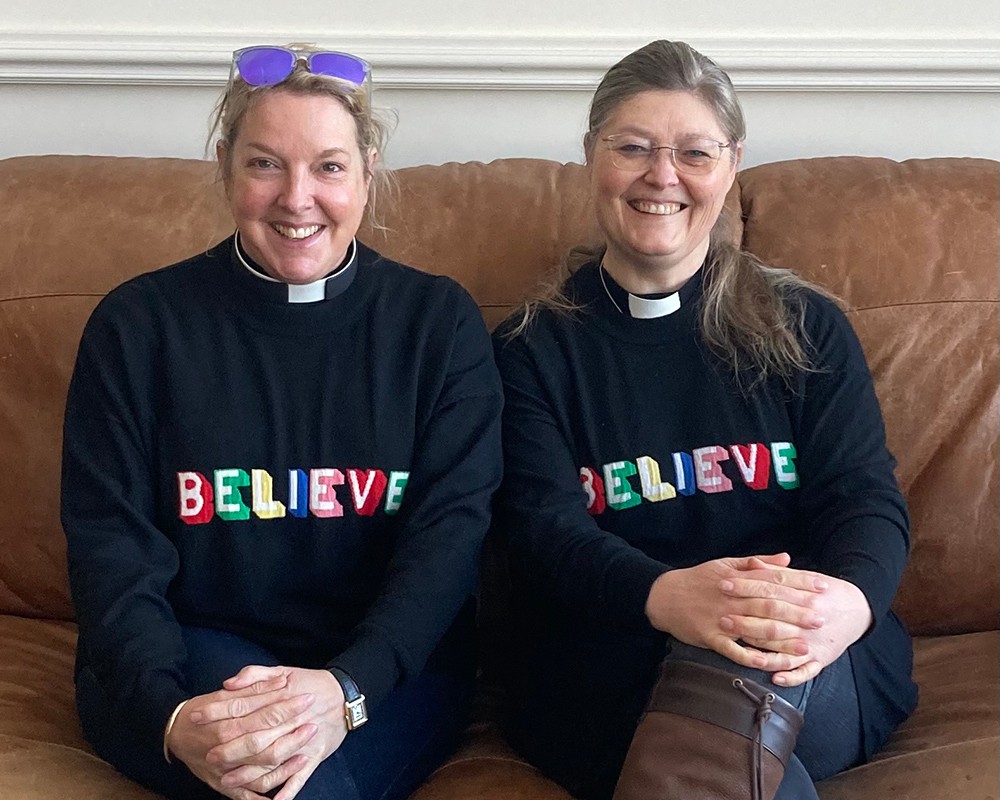
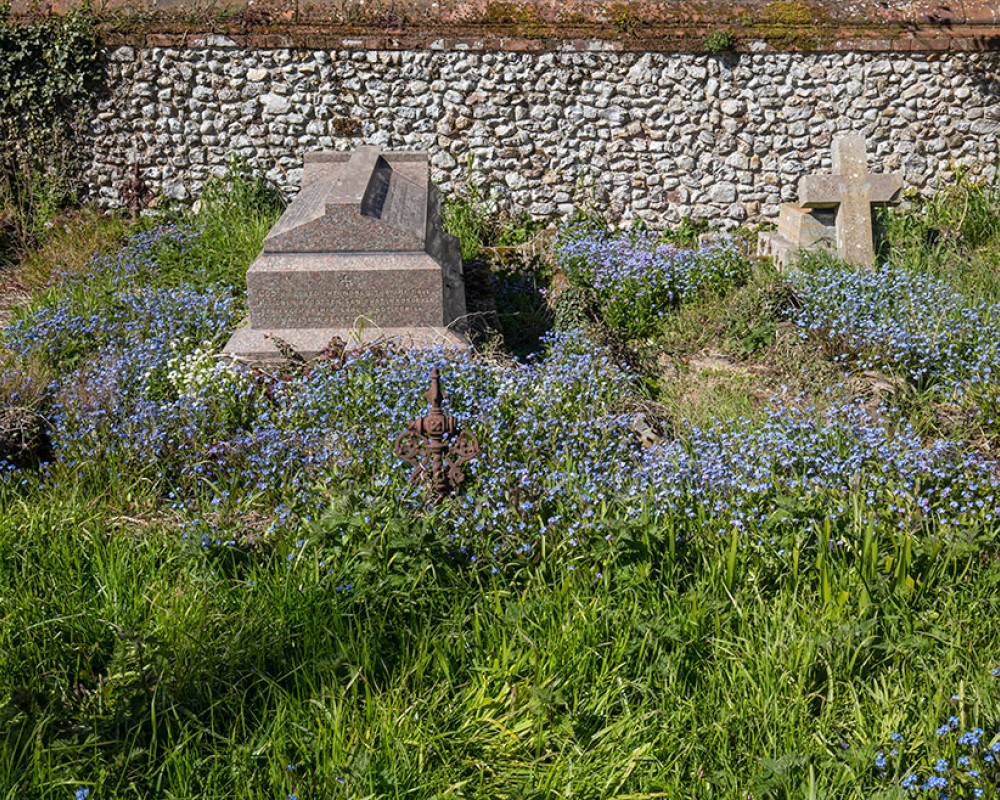
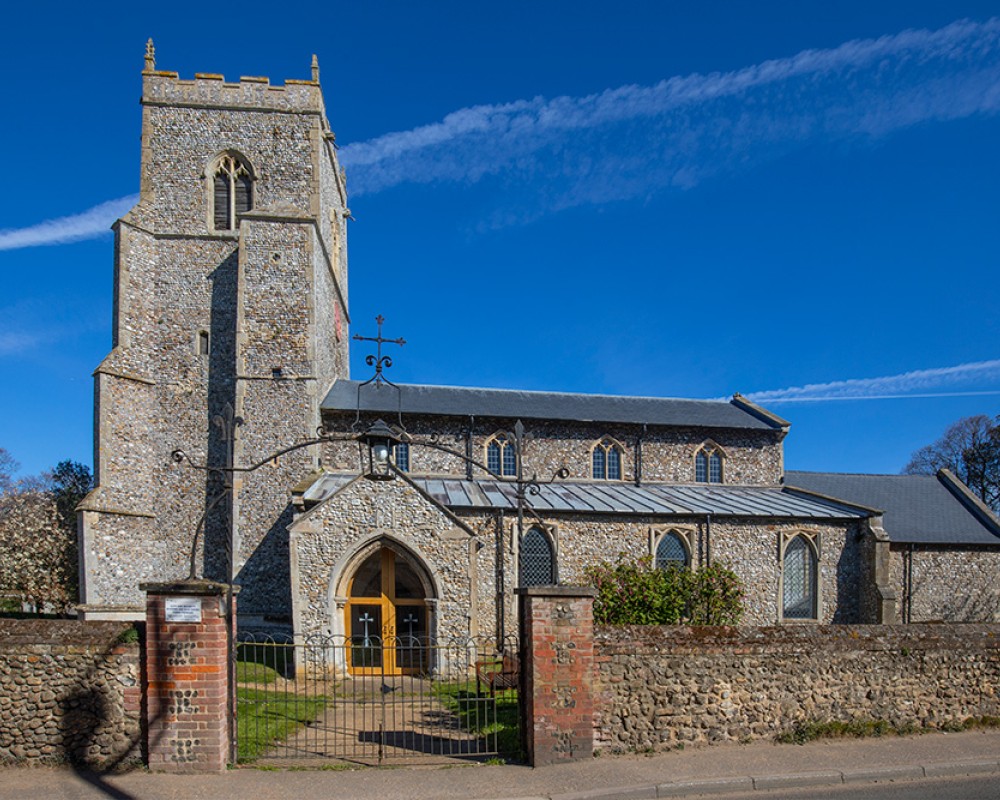
ABOVE: Kirsty Allan & Rachel Dines and a few of the wonderful wildflowers planted by Kirsty and the children of St Mary’s Primary School.
“I’ve never seen it myself, but I’ve heard you can sometimes see honey dripping down from the roof,” says Kirsty Allan, Team Vicar for the Hunstanton and Saxon Shore Benefice. “Last summer I attended a beekeeping course with our Team Rector Rachel Dines, and we’re planning to get some hives so we can keep them if they ever swarm. We love having bees here, and if they choose to stay we hope to make jars of church honey.”
And the bees aren’t the only natural wonder at St Mary’s, as Kirsty has recently worked with local schoolchildren to create a wildlife corner at the east end of the churchyard.
“We wanted to bring more biodiversity to the area and create an outdoor classroom for the children to explore,” she says. “It’s attracted a haven of wildlife, with everything from muntjac deer and bats to a vast range of birds and insects. The children really loved creating it, and they’re always so excited, keen, and eager to learn about the natural world around them.”
As spring approaches, Kirsty intends to go a step further by planting a carpet of wildflowers in the churchyard.
“I’ve seen it done at St Stephens church in Norwich and the effect is amazing,” she says. “I know the children will enjoy putting it together, and it’s something the whole village will be able to admire.”
With its historic treasures, stunning memorials and sea of wild wonders, St Mary’s is a truly delightful place to visit. Warm, welcoming, and bursting with life, it’s a small church with a big heart - but it has an extremely bright and colourful future.
